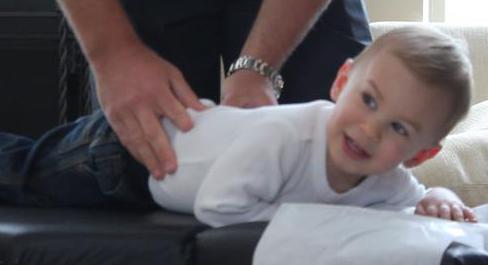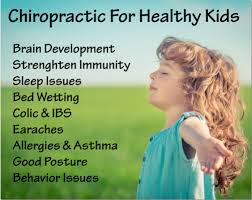Healthy Living Chiropractic, LLC.
Who could be more important to you as a parent
than your child!?
· Did you know the 1st subluxation causing trauma your child encounters is at birth?
· Did you know children fall down an average of 1500 times while learning to walk?
· Did you know that Chiropractors can identify and correct scoliosis in children?
· Did you know that Subluxation can be the cause of an ear infection?
· Did you know that the immune system can be boosted by getting adjusted?
· Did you know that a child’s adjustment is different from that of an adult?
Here at Healthy Living Chiropractic we make it a point to check all our families’ children, either when we meet them or upon birth.
Our bodies are made to grow and heal from within. Subluxations can rob the body of its basic communication system that allows us to function at 100%. Our nervous systems allows us to breath, regulate core temperature, walk, talk, you name it. Most importantly for your child, the nervous system controls the immune system!
Our check-ups are easy, take little time, and depending on age and trauma history may not even require x-rays!
Just so you know, if your child requires care, children’s adjustments are much different than an adult’s. They are lighter and take less time. If subluxations are identified in your child’s spine, they usually take less time to correct than those found in adults. This is due to the amount of time the subluxations are present.
It is as easy as scheduling a time during your next appointment for your child. We are always here to help you, your health is our goal! We cannot afford to wait to check for subluxations because of the damage that they can cause.
Have you ever seen an entire family who wears glasses? How about a family in which all of the childern have braces on their teeth? …or they all have the same color eyes, or hair, or are the same height? Of course, we all have. This is because of a genetic predisposition toward certain physical characteristics.
Spines are no different! Subluxations tend to run in families and people who do like activities. It is not usually for x-rays to show entire families exhibiting nearly the same low hip, short leg, or scoliosis.
It is for this reason the we recommend families to have a spinal checkup in this office if we see subluxation in one of the family members. Parents can pass these traits on to their childern! If one parent has subluxation, then the children may inherit the same spinal characteristics, and if a child has it, then he or she may have inherited it from one, or both parents.
Even if we have the gift of not inheriting our parents’ maladies, other similarities in lifestyle can cause spinal damage that may not be seen or felt for years to come. Car accidents are a prime example. It is common, unfortunately, for an adult to experience serious injury in a car accident, with children in the car, and because the childern have not outright complained, they are simply neglected to develop serious spinal problems later in life!
So, if you are reading this, and you have been diagnosed with subluxation, do not wait another minute to schedule a complimentary checkup for your entire family. That’s right, there will be absolutely no charge! At best, we can confirm that your family is healthy. At worst, if a problem is found, it has been detected early, and we can correct it now before it becomes permanent!
Keeping your child's spine free from vertebral subluxations will help your child's natural defenses against disease. This will help you avoid drugs and all of their side effects. If your child has any of these conditions make sure his or her spine is healthy:
- Fever
- Colic
- Croup
- Learning Disorders
- Poor Posture
- Neverousness
- Constipation
- Bed-wetting
- Weakness or Fatigue
- Allergies
- Sinus Trouble
- Stomach Ache
- Loss of hearing
- Ear infections
- Asthma
- Skin Disorders
- Scoliosis or curvature
- Neurological Conditions
- Bronchitis
- Frequent Colds
- Diseases of the muscles
- Poor Concentration


